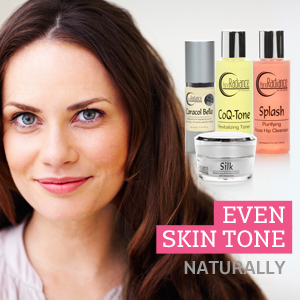
I used to wondered what are those strangely named ingredients in the shower gel, shampoo, hand wash, toothpaste, hand creams and lotions etc. I did not carry a dictionary with me for shopping, and once I have purchased a beauty product, I did not care anymore. I have trusted that the beauty industry is not all about money, but they honestly want to provide a product that helps me to stay clean or young looking.
It’s all changed a few years ago when I have came across a great book about the many toxic ingredients that may be present in the body care products we use. I have started to read this book and I was shocked. I had to realize how ignorant shopper I was never questioning what is in the body care products I have used.
Samuel S. Esptein’s book: Toxic Beauty is a must read for everyone who is concerned about the wellbeing of their family. Not only it gives you an overview of the beauty industry, but it shares the information we need to know about the most commonly used chemicals and their biological effects. We have the right to know these, and we have the right to informed decisions and choice concerning the products we use.
Let’s look at Palmolive’s Antibacterial Lime Liquid Hand Wash.
Ingredients: Water, Sodium Laureth Sulfate, Cocamidopropyl Betaine, Lactic Acid, Cocamide MEA, Fragrance, Sodium Benzoate, Sodium Salicylate, Glycerin, Tetrasodium EDTA, Benzophenone-4, Poloxamer 124, Lime (Citrus Aurantifolia) Juice, Lime (Citrus Aurantifolia) Oil, Cl 47005, Cl42090
What are these?
Sodium Lauryl Sulfate is the most toxic ingredients on this list. When used in combination with other chemicals, it can form nitrosamines, a deadly class of carcinogen. It is also used to clean engines, garage floors and at car washes.
Cocamidopropyl betaine is a surfactant and foaming agent. It was voted 2004 Allergen of the Year by the American Contact Dermatitis Society per Wikipedia.
Lactic Acid is a penetration enhacer, improve the body’s absorption of other ingredients, which can be dangerous if those other ingredients include toxins
Epstein, Samuel S. (2009-04-01). Toxic Beauty: How Cosmetics and Personal-Care Products Endanger Your Health… and What You Can Do About It (p. 36). BenBella Books, Inc.. Kindle Edition.
Cocamide MEA is hormone-disrupting chemical that can form cancer-causing agents — research indicates a strong link to liver and kidney cancer.
“Fragrance” is a euphemism for nearly 4,000 different ingredients. Most “fragrances” are synthetic and are either cancer-causing or otherwise toxic. Exposure to fragrances has been shown to affect the central nervous system.
Sodium Benzoate is a preservative that promotes cancer
Tetrasodium EDTA is a surfactant and hormone-disrupter
Poloxamer 124 – surfactant
Sodium Salicylate or salicylic acid is a penetration enhancer, improve the body’s absorption of other ingredients, which can be dangerous if those other ingredients include toxins
Cl 47005 – also known as acid yellow 3, or yellow 10, cosmetic and food colorant
Cl42090 – also know as FD&C Blue No. 1, Acid blue 9, D&C Blue No. 4, colorant & it is an allergen
Even if the amount of these chemicals are very law in a single product, the problem is that they are included in MANY products we use daily, and a lot of little amount add up. These not only endanger us, but our babies too.
“As a clear illustration of how easily the chemicals a mother uses on her skin end up in her fetus, consider these findings: An analysis of umbilical cord blood samples taken from twenty-seven European volunteers, in a 2005 study conducted by Greenpeace International and Britain’s WWF (formerly known as the World Wildlife Fund), detected eight groups of contaminants.1 These included fragrances used in perfumes and personal-care products, and synthetic musks, used to replace natural aromas in cosmetics, hand creams, perfumes, and soaps. The most common type of synthetic musk, known as HCB, turned up in almost all of the blood samples taken. Musk ambrette, another synthetic musk, was found in twelve of twenty-seven umbilical cords tested—despite the fact that this ingredient had been banned in European cosmetics (though not in U.S. cosmetics) as a toxin since 1995.”
Epstein, Samuel S. (2009-04-01). Toxic Beauty: How Cosmetics and Personal-Care Products Endanger Your Health… and What You Can Do About It (p. 68). BenBella Books, Inc.. Kindle Edition.
I think it is truly alarming and I have switched all the beauty products I use. My one stop shop for toxins free beauty and household cleaning products is Modere. Use coupon code: 566605 for $10 off from your first order (works on orders over $50)
What non-toxic beauty products do you use? Please comment.
If you liked this post, please share and pin!


